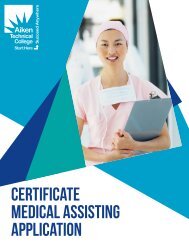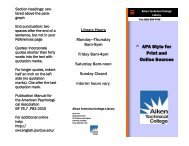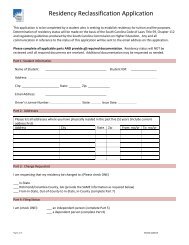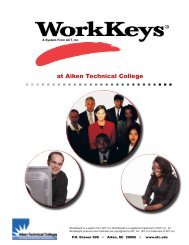2009 Accountability Report - Aiken Technical College
2009 Accountability Report - Aiken Technical College
2009 Accountability Report - Aiken Technical College
You also want an ePaper? Increase the reach of your titles
YUMPU automatically turns print PDFs into web optimized ePapers that Google loves.
30<br />
assessment/evaluation to ensure that ATC continuously builds upon strengths and improves upon weaknesses.<br />
Acknowledging a public demand for accountability in higher education and an institutional commitment to<br />
high quality programs, services and operations, ATC implemented Act 359, Performance Funding in South<br />
Carolina; ACT 629, Higher Education’s Initiatives for Research and Academic Excellence in South Carolina;<br />
and Act 255, Institutional Effectiveness in South Carolina. In addition, the <strong>College</strong>’s Institutional<br />
Effectiveness Program provides an internal report card of its performance and effectiveness on internally<br />
developed critical success factors and core indicators of success.<br />
ATC employs a comprehensive planning process as the centerpiece of its overall institutional effectiveness<br />
program. Three distinct plans are developed and implemented at the institutional level: a five-year, fixed-term<br />
strategic plan; a one-year annual plan; and numerous variable length single-use plans. The planning and<br />
evaluation process itself is modified periodically to meet current and future needs, as well as the evolving<br />
mission of the <strong>College</strong>.<br />
The <strong>College</strong> has adopted a National Peer Group (NPG) consisting of nineteen (19) public, two-year<br />
community and technical colleges based on an extensive list of variables. Institutional performance in<br />
academics, finance, student services, financial aid, and other areas will be compared to the NPG to identify<br />
performance gaps. Other peer groups are being established around Achieving the Dream institutions,<br />
institutions within the SC <strong>Technical</strong> <strong>College</strong> System, and similar size institutions accredited by SACS.<br />
The Energy Consumption <strong>Report</strong>, Enrollment Tracking <strong>Report</strong>, Campus Security <strong>Report</strong>, the tracking of<br />
Student Learning Outcomes (SLOs), and Monthly Budget <strong>Report</strong>s are examples of data used to measure and<br />
monitor institutional performance.<br />
III.4.2. How do you select, collect, align, and integrate data/information for analysis to provide effective<br />
support for decision making and innovation throughout your organization<br />
The integration of data analysis with the planning process is addressed in III.2.1 and III.3.3.<br />
III.4.3. How do you keep your key measures current with educational service needs and directions<br />
ATC evaluates the effectiveness of student academic achievement through assessment at the course, program,<br />
and institutional level. Assessment objectives for academic success include, but are not limited to:<br />
• Evaluating student preparedness for employment and work;<br />
• Evaluating student preparedness for transfer to a four-year institution;<br />
• Evaluating the effectiveness of college-wide general education;<br />
• Evaluating the effectiveness of academic programs, including university transfer and developmental<br />
education;<br />
• Evaluating retention and attrition trends, as well as completion rates by award type; and<br />
• Improving instruction through collaboration, sharing of best practices, and assessment results.



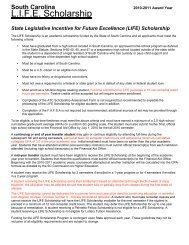
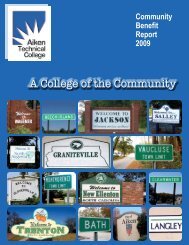
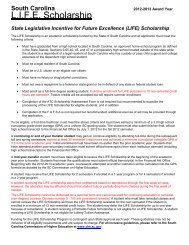
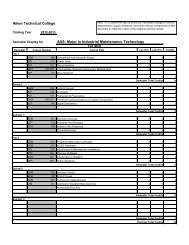

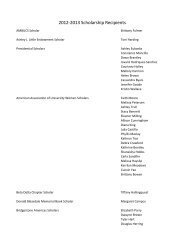
![MLA PowerPoint presentation [PDF] - Aiken Technical College](https://img.yumpu.com/36398339/1/190x143/mla-powerpoint-presentation-pdf-aiken-technical-college.jpg?quality=85)
